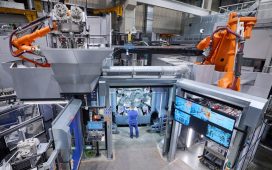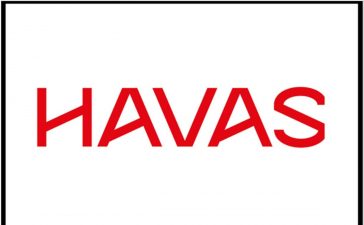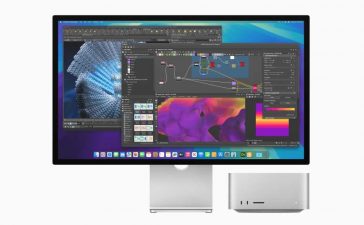There’s a bit of a battery manufacturing boom going on.
In 2021, battery manufacturing in the United States totaled approximately 55 gigawatt-hours’ worth of cells, or roughly enough batteries to produce 700,000 EVs.
By 2030, that production is expected to top 1,000GWh, growing by nearly a factor of 20. Billions of dollars in incentives such as the Inflation Reduction Act and Bipartisan Infrastructure Law have spurred the creation of a so-called Battery Belt across the southeastern US, all fuel to fire an anticipated spike in electric vehicle demand.
More demand for EVs means more demand for batteries, which, in turn, means higher demand for raw battery materials, stressing a global infrastructure already stretched to the limit. The solution, or part of it, might come from recycling. With billions invested in some literally explosive recycling technology, Redwood Materials is poised to become a significant factor in meeting that need.
Supply and demand
There’s recently been some churn in the media about cooling demand for electric cars, but a quick look at the numbers shows demand is strong. While EVs made up less than 8 percent of total US new vehicle sales in Q3 of 2023, that number still represented a nearly 50 percent increase compared to the previous year.
That demand is only expected to grow, which is leading to a surge in battery production. However, where you can stand up a battery factory inside of two years, it can take upward of a decade to get a new mine going.
For EV manufacturers that want to make cheap cars with big batteries, that’s a challenge. For a recycler like Redwood Materials, it’s an opportunity. After all, material scarcity leads to value, and there’s gold in all those EV battery packs headed to landfills.
Well, not literal gold, at least not much, but there is plenty of lithium, cobalt, and other materials that are good for batteries but hard to find in the earth. This has driven massive investments, including a recent $1 billion Series D raise for Redwood.
“There’s been significant investment flowing towards building recycling capabilities across the world in recent months,” Jessica Roberts, head of forecasting at Benchmark Mineral Intelligence, says. “In North America specifically, we’ve seen both private and public funding go towards individual recyclers looking to expand existing plants or support the construction of new facilities.”
“There’s been significant investment flowing towards building recycling capabilities across the world in recent months.”
Former Tesla CTO and co-founder JB Straubel launched Redwood in 2017. Straubel used his early connections to secure agreements to recycle Tesla scrap cells from Panasonic, but since then, has partnered with automakers like Volkswagen, Audi, and most recently, Toyota. Redwood is even in on the e-bike lifecycle, signing recycling agreements with companies like Specialized, Rad Power Bikes, and Lyft.
While Redwood has been getting the bulk of the buzz of late, it’s far from the only player in this recycling space, each with a different approach on the same theme: refurbish and reuse where possible and dissect and recycle where necessary. Ecobat is known as the largest recycler of batteries in the world, a longtime dominant player of lead-acid battery recycling with a growing focus on lithium cells. Manufacturers, too, are getting in on the game. LG Chem, which provides batteries for many global EV makers, has recently made investments in a number of recycling startups, like Li-Cycle, to facilitate in-house recycling and refurbishment.
But that’s just the beginning. Per Benchmark estimates, $24 billion in recycling investments will be required to meet 2030’s anticipated demand.
It’s a big investment — and big science, too.
A little chemistry
As manufacturers iterate on their electric vehicles, subsequent generations of cars are hitting dealerships with ever more advanced batteries. Those batteries are not only getting bigger but they’re also carrying more advanced internal chemistries.
While virtually every modern EV relies on rechargeable lithium-ion batteries, the same basic technology found in your smartphone or Steam Deck, the composition of those batteries varies widely depending on a given manufacturer’s needs. A little extra cobalt in the cathode can extend a battery’s lifecycle, for example, while more advanced anode designs speed up charging.
Still, lithium-ion batteries primarily rely on the same basic materials: lithium, nickel, cobalt, manganese, and graphite. Formulations like nickel-metal-cobalt (NMC) or lithium-phosphate (LFP) rely more or less heavily on individual constituents, but they all need large amounts of the same hard-to-find stuff.
If we’re going to be able to foster a new transportation infrastructure based on electrification, we’re going to need a better place to pull these materials. That’s where Redwood comes in.
Sourcing
Even when an EV or hybrid is too tired for daily use and must be put out to pasture, or when a 4MWh solar farm in Hawaii is decommissioned, those batteries still contain valuable, rare materials.
Jackson Switzer, VP of business development at Redwood Materials, likens tired batteries to the catalytic converters that keep disappearing from underneath people’s cars. “They have inherent value, they should be recycled, they should exist in a closed loop.”
Per Benchmark estimates, $24 billion in recycling investments will be required to meet 2030’s anticipated demand
A closed loop means pulling raw materials out of batteries and repurposing them into new ones. The first part of that loop is finding those packs before they hit landfills, and that’s partly why Redwood has been so aggressive in signing agreements with global EV manufacturers like Volkswagen.
As packs are scrapped at official service centers or even during manufacturing, Redwood gets a call. While modern EV batteries are expected to last up to 15 years, per research by the National Renewable Energy Laboratory, earlier formulations lost their spark much earlier, and there’s always the risk of damage sending that pack to the recycler well ahead of its expiration date.
Another primary source is from auto dismantlers, disparate groups of vehicular pickers that cumulatively recycle somewhere north of 10 million cars every year in the US. To help them, Redwood Materials has created something Switzer calls “Carvana for batteries.”
Through this web portal, you need only type in the make and model or VIN (the 17-digit code that uniquely identifies any car sold in the US) for a given car. The system immediately looks up the details on the battery pack within and presents a value.
For a demonstration, Switzer entered a Ford Mustang Mach-E. Redwood’s portal immediately returned a value: $290.25 for the standard range or $388.86 for the long-range model, paid directly by Redwood to the person providing the pack. That may not sound like much given the cost of a new car, but for a true recycling scenario, that’s more than the value of all the scrap metal within those cars.
And there’s one final, significant source of battery cells for recycling: production. With all the new factories coming up to speed from companies like GM, Hyundai, and BMW, Switzer says the company expects a “fairly significant” volume of defective cells. “That’s not a knock at all on the cell manufacturers,” he adds. “That’s just reality. They’re going to be ramping and building so fast that there’s always going to be some line that’s not at steady state yet.”
In manufacturing, the overall percentage of good, sellable products to bad, defective stuff is called the manufacturing yield. As these new battery factories spin up, their yield rate will be relatively low, resulting in batteries that are still full of the right stuff but aren’t usable in customer cars.
They are, however, ideal for recycling.
Recycling process
All these rechargeable batteries do the same thing: chemically store electricity by shuttling ions from the anode to the cathode and back again across an electrolyte solution. The physical designs of those packs, however, are substantially different.
While big battery packs look monolithic, they’re often composed of multiple modules. Those modules contain dozens of individual battery cells. More advanced packs have active systems with channels and pipes for funneling coolant, plus endless sensors to ensure those cells stay in their happy, cozy thermal range.
$290.25 for the standard range or $388.86 for the long-range model
All of those novel designs make Redwood’s job harder. Those packs must first be broken down to access the raw materials, stripping off all the metals, plastics, and whatever else is stuck on there during manufacturing.
This is a manual process, with trained workers in a controlled environment disassembling, pulling, prying, and sometimes literally tearing packs apart.
Switzer says that Redwood’s goal is for upward of 95 percent reuse and recycling of materials. Materials like copper are directly recycled by Redwood and turned into foil, an essential component in battery manufacturing. Even the plastics, Switzer says, are increasingly recycled.
“Plastics are a challenge across the board. There’s no reason to shy away from that,” he says. “But the interesting thing about automotive is most of the plastic is actually the good, valuable recyclable type of plastic.”
But the heart of the matter is the raw materials at the cores of these packs, which make up the anodes and the cathodes of the individual cells.
It’s nice to think about simply scraping those materials out and slapping them into new batteries, but that’s not feasible. As packs age, the components within begin to mingle, and their structures break down. Separating everything is a complicated task. Doing it quickly and efficiently is a massive area of research, but one technique is showing the most potential.
“Redwood has spent several years, we’ve tried most every process,” Switzer says. “And so, this reductive calcination process we’ve ended up on is what I would call our mixture of everything that we have tried and seen in the market.”
In reductive calcination, the battery is run through what Switzer calls a “controlled thermal explosion.” Modern battery packs are so energy-dense that they can literally act like bombs. And there’s plenty of footage of what happens when something goes wrong.
Battery manufacturers work incredibly hard to prevent that from happening, but for Redwood, inducing that chain reaction is critical. The energy from burning off the electrolyte that separates the anode and cathode breaks down the battery components within, making them ready for further processing and recycling.
All of this may sound somewhat catastrophic for the environment, but according to research compiled by Stanford University, it’s far more efficient than other processing techniques. Since it provides its own energy, it requires far less from external sources while offering substantially reduced CO2 emissions and water consumption. The overall environmental impact is likewise a fraction of that of mining the materials in the first place.
Reconstitution
After the reductive calcination process, it’s time to start separating the valuable materials. Switzer calls the resulting material an “intermediate” that is then ground into powders. “Then we essentially refine those where we start to pick them apart,” he says.
The resulting chemistry is a little complicated, but the processing from here is not dissimilar to what happens with raw materials from mining. “The key differentiator, though, is our powder contains nickel, cobalt, lithium, typically at higher concentrations than you find in a mined ore,” Switzer says. “We conveniently have them all in one place because they’re coming out of a battery.”
All of those novel designs make Redwood’s job harder
The promise is raw materials that are as good as new and ready for manufacturing, even if the initially recycled batteries were old and tired. “Some initial studies have suggested recycled cathode materials in batteries can match the performance of new ones,” Benchmark Mineral’s Roberts says. However, she adds that this is still a developing science: “Determining which recycled parts and which recycling methods produce performance in line with new materials will take time.”
The future
As mentioned above, disassembling packs is a largely manual game right now. But Switzer says that the opportunity to apply automation and machine learning to pack deconstruction techniques is high: “Right now, we’re looking at like 100 to 200 different types of packs that are out there in the market in the US, let’s say. So it’s definitely completely learnable from my perspective.”
The other significant improvement, though, will come from simply increasing the volume of operations. Last year, Redwood committed to a $3.5 billion recycling facility in South Carolina, right in the heart of all the upcoming American battery manufacturing. With access to the Port of Charleston, Switzer says that exporting anode and cathode materials to Europe becomes a very real possibility.
This facility will be twice the size of Redwood’s current operations in Nevada, and deliver an anticipated output of 100GWh of materials on top of the Nevada facility’s 100GWh.
That’s 200GWh of material production or enough to supply four times the entire US battery output in 2021. However, Redwood’s projections see US battery production spiking to more than 1,600GWh by 2035.
Closing the loop
To really bolster US EV infrastructure, we’ll need to cut down on mining. But can we meet the market need with recycled materials? Can we ever really close this loop of battery demand? “There is sometimes a misconception that recycling is the industry’s immediate silver bullet to both supply shortages and sustainability concerns,” Roberts says. She says that time may come, but it’ll be decades before there’s enough raw material in circulation for the industry to sustain itself.
Redwood’s Switzer is targeting 2040. However, he says that it isn’t just one loop. It’s many loops, and some will close sooner than others. “Early EV batteries had a lot more cobalt than EVs that are coming off the lines today. And then the consumer electronics segment actually uses a ton of cobalt,” he says.
In other words, the cobalt loop is closing soon, and with any luck, the rest won’t be far behind.
Updated December 7th 2:52PM ET: Redwood’s facility in South Carolina will support 100GWh, not 400GWh. Jackson Switzer, VP of business development at Redwood Materials, misspoke in his interview.











